-
Posts
1,412 -
Joined
-
Last visited
-
Days Won
9
Content Type
Profiles
Forums
Gallery
Downloads
Blogs
Events
Store
Aircraft
Resources
Tutorials
Articles
Classifieds
Movies
Books
Community Map
Quizzes
Videos Directory
Posts posted by pylon500
-
-
The fact that they (Skyfox) needed to use sloshing sealer in their fibreglass tanks, says a lot about the quality of their glass work? As
for Randolph 802 versus mogas, our 1983 LightWing had pop riveted alloy
wing tanks with 'ProSeal' on the joints and as a good measure the tanks
were sloshed.About eight years later (I think we changed from using Super to using Unleaded) we suddenly found our fuel filters clogging up with this brownish 'gunge'which was the sloshing compound breaking down (I'll have to get the photo and scan it!)Howard sent us his new glass tanks (unsloshed) and they're still going.Arthur.
-
G'Day 'Cecil?'The short wing Avid was living near Bellingen last I heard of it.I helped teach the guy who got it off your dad and found it a great little cruiser!A bit cramped, but I'm only 5' 12" I did hear a rumour it was going to be fitted with a 2.2 Jab motor.Can't find my photo of it.
Arthur.
-
Yes it would be safer to crash into trees in a Caravan than a
drifter, but I'd still want to be sitting in the BACK seat of the
caravan!, you'd be better off in a Lighthwing.Back
in the 70's, the ultralighters over in WA had a good idea and started
calling themselves the 'Super-light' Aviation Association (sic) where the idea was to build ever faster machines while staying somewhere near 95:10!When I first came across ultralights in the late 70's (in WA), the deal seemed to be 'If you want to fly, you have to build it yourself'.This seemed a good way of separating the 'Untalented rich', from the dedicated 'Want to learn and create' types.This was the EAA's basis of the 'Experimental' catagory; learn, design, create and fly.I
guess people are still learning something when they buy their 3 week
quick build RV-?a, and pay someone else to build it, I'm just not sure what they are learning?As
for 720 kgs, I guess if we're forced to stay under 45kt stall, that
should go some way towards maintaining the low inertia concept we
started with, maybe it should go back to 40kts?I learnt to
fly in gliders, the upper end of which can have VNE's of over 160kts,
yet still have stalling speeds below 40kts, it just requires 'educated'
design.Arthur.
-
As mere Recreational flyers, most of us only fly day VFR (don't we?!) and listen to our radios if we have them.It is rare for us to require any outside help in our day to day flying.As such, previous AUF (RAAus)
policy has been to protect us from the money grabbing private sector
that runs AirServices, by refusing to divulge the operators of
recreational ultralights.It would now appear that
AirServices simply threaten to bill RAAus directly at which point the
bill is forwarded to the certification holder!I don't know
if AirServices is made aware of the reciepient, or how they would go
about enforcing the monetary procurement from RAAus if the the bill has
just 'disappeared' into the 'system'?<br ="k-block-placeholder">"Say again-crackle-crackle- tower, I'm-screech-buzz-altitude at-buzz-crackle-crackle ?"
-
G'Day Rodger, I hate to shatter your allusions, but I did point out elsewhere that the old SkyFox is really a copy of the American 'Denny' KitFox (the MKII to be exact)Around about the KitFox V, 'SkyStar' (the newer parent company) introduced a tricycle U/C, and called it the Vixen.The mob up at Caloundra saw this and adapted the nosewheel to the SkyFox and called it the Gazzelle. 'SkyStar' got as far as the KitFox VII before going bust againThe EuroFoxis just another copy, of a copy, of a copy, and so on. As you may have guessed, I'm no fan of the Skyfox, especially after having to repair a few of them.You may notice insurers don't like them either, mainly because of the repair costs.For example, a typical accident for a SkyFox (no a Gazzelle) is a ground loop.This could be blamed on the shorter fin and rudder than a Gazzelle, but either way the damage was usually a collapsed U/C (it is a bit weak) a broken prop, some cowl damage and often some cracking back near the fin post.The annoying bit though is that most of the time, the a wingtip hit the ground, and most of the aileron hangers would break off!That would seem bad enough, but if the wing hit hard enough, it could bend one of the spar tubes, and when that happens....You throw, the wing, away! The amount of work required to replace either spar tube was more than the wing was worth!I don't know what you would do now? My other gripes were basic ones like, a cramped cabin, small doors, a hot cabin, having to duck under the wing in flight to see where you were going, always guessing how much fuel was really in the tanks, the leaking hydraulic brakes, the fact you could apply full rudder or full brake, but not at the same time!Other than that, they seemed nicely built, had attractive upholstery and had folding wings!Sorry if I've crushed anyones dreams, but I can only tell it as I see it.C'mon Howie, lets get more Lightwings out there! Arthur."Now where's that fireproof suit?"
-
I would have to agree that the oil tanks location is questionable. As mentioned in another post, one of our club GR-582's was rebuilt as a GR-912 by the factory, but when it came back, the oil tank was just behind the pilot seat.This seemed OK at the time, it was accessable and with the vents open, the
heat was not really noticed, the main problem was the length of all the plumbing, plus the change of oil level between level flight and when on the ground (it's a taildragger). The next time some work was done at the factory, the tank was moved to the now typical location, and yes, it's easy to spill oil in the cabin and if the cap's not on right it makes a hell of a mess, but worst of all (to me) is that it makes the aeroplane even more nose heavy. I discussed this with Howie once and he was quite happy with having a CofG range of 16 to 23%!Being a modeller and sailplane pilot, I've been used to CofG ranges between 20 to 35% (some laminar sections will happily go to 40%!) Basically the LightWing was designed and set up to be a trainer, being slightly nose heavy and having limited elevator travel, it requires effort to stall the aircraft and is exrtemely hard to spin, tending to just fly out after half a turn (classic spin at idle)The down side to this is some difficulty in doing three point landings at idle or if deadstick (when you really need to for short paddocks!) I'm wandering off thread here a bit but, when our GR-582 came back as a GR-912, it had new undercarriage that was swept forward compared to original, and this was explained as being needed because the engine was heavier? This is interesting as the wing is still in the same place?? The new U/C moved more weight onto the tailwheel and increased the tendancy to groundloop!!I was not happy. It turns out the U/C was actually the gear used on the GA-55 which as well as having a different wing, has it located about 5" further forward relative to the old GR wing.This puts the gear in the right
place for the wing and CofG as well as giving more elevator authority via the longer tail moment.Still, after asking around, I found that most opertaors of GR-912's didn't seem to mind or notice, and some where operating off bituman runways ?!Now after instructing in our GR-912 for a few years, I've got used to it's habits and I'm happy with the way it stays planted on the ground after landing, espcially in stromg winds.It will bite if you let it, but, if it's the only thing you've flown, you get taught to avoid it, and fly on.Sorry about the rant.
Arthur.
-
Wow Tony,I logged off after reading the first post to compile photos for my reply, now I'm not sure what to say?I've battled with the emotions of where our 'Ultralight' direction is heading for many years.On one hand wanting to keep 'Ultralights'ultralight, but on the other hand wanting get into really high performance 'Superlights' (to use an old Western Australian clubs name)Having come from flying high performance sailplanes, the idea of flying in scouts didn't really appeal to me.But now, looking at obviously lightweight G-A planes on the market, at the price they are, and the type of people they attract (Yeah, it's the green eyed monster!) I feel myself in a dilema; I'm happy to keep our club operating with it's two LightWings, flying aircraft affordable to the Joe in the street, and not push to upgrade to some mega-buck hot rod, just to attract the well heeled to our club. At the same time I'm busily working in my shed to produce a kit for a 503 powered single seater that will hopefully do in excess of 120 kts and some time in the future spawn a 500cc racing class!Any-way, back to the LightWing Mk II question...First a quick history lesson on 'contemporary' LightWings.(I'm not going to spell out the entire Hughes history)Production started with the LW-1, powered by a Rotax 532 (yes, the hand grenade) and was often reffered to as the 'BOX'
[ATTACH]1025[/ATTACH]
[ATTACH]1026[/ATTACH]
I first thought it was ugly, but after having flown Scouts, Thrusters and Drifters, to fly something that didn't flap and twist all over the place was very assuring. (sorry Tony)Our first LW-1 had rouond tube struts, no doors, a pull start and two small leaking fuel tanks.After about the third 'grenade' went off, we had to send the airframe back to Howie for a rebuild. It came back with the then new Rotax 582, with electric start, doors, carpet, bigger fibreglass wing tanks, a reduced fin, stronger tail wheel and the all new lowered turtle deck. :-}It's new designation was a GR-582.
[ATTACH]1027[/ATTACH]
We liker this so much, we bought another one!Eventually though, $4!t happens and our new plane had it's front end written off. :-%When it came back from Howie, it was now an all new(ly referbished) GR-912 with an 80hp four stroke Rotax, long range alloy tanks, a stronger (still) tailwheel and a redesigned undercarriage?!
[ATTACH]1028[/ATTACH]
I was never happy with the new U/C, but in the last two years it's all I've instructed in, so I've gotten used to it. While our club stayed with these two LightWings, Howie moved on and had a crack at the low G-A end of the market,and produced the GA-55.
[ATTACH]1029[/ATTACH]
This actually happened before the Rotax 912's were affordable, so Howie, wanting to use a four stroke and keep the G-A types happy, used the Aeropower VW.The GA-55 also featured a totally new wing with less span, a faster wing section, a single strut and flaps!Unfortunately the combination of less wing and not a great deal of thrust changed the LightWing from something that would be airbourne almost by the time you reached full power (if you knew how to treat your two stroke propperly) to a plane that actually needed to build up speed along a runway.I don't think the GA series was ever certified as a factory built (most being kits) and it just sort of died off.I'm sure some GA-55's ended up with 912's, and would be interested to know how they perform?Finally, in the 'GR' line, howie would succomb to pressure and produce the GR-912'T' for trike geared version.
[ATTACH]1030[/ATTACH]
As for the initial reason for this thread.. :-" I think that a GA-912 with slightly longer wings and better designed flaps would give us an aeroplane that, although probably not that much faster than a GR-912, would be a lot more fuel efficient, while still having all those good Lightwing attributes of good handling, cabin space, visability, ruggedness and general utility.
Arthur.
-
Just a quick one, while doing a hundred hourly last weekend, I noticed a crack had formed on the brake band attaching tang where it is welded to the stub tube. (forgot to take a photo!) Asked a nearby LightWing operator who then said he had had the same problem.Problem has been welded up but would like to hear of others with the same or similar problems.This reflects from an incident we had about ten years ago when an axle snapped off an LW-1. Severley damaged the aircraft, and we then found that it had happened before to others, but it was not 'common knowledge'! Just looking at the AUF airworthiness site and I don't see any direct 'online' way of submitting a notification other than the 'Defect and Incident Report form' or by emailing the Tech. manager via the 'contact us' link.
-
-
Hi Howard
Just out of interest, how many LightWings are out there?I don't want names and numbers, and we don't want to give the to AirServices either! I've been instructing in this one for over 14 years, it's a LW-1 updated to a GR-582 (sn#005!)This was it's second colour scheme (my design ) which caused much debate in the club.Most liked it, but the detractors ended up calling it the "Liquorice Alsort"
Arthur.
-
Be careful not to confuse wheel shimmy with wheel imbalance, two different problems.Wheel imbalance can lead to vibration annoyance, wheel shimmy can lead to catastrophic failures!!Shimmy can also occour on both nose and tail wheels, but as mentioned earlier, is not quiet as destructive on taildraggers.
Arthur.
-
Of course the irony here is that for your $130k, you could buy a second hand Piper Arrow that will do 130 knots+, with full IFR, retractable, auto-pilot, four seats and can be parked outside without melting!But we still like our Ultralights?Had a chat to the guy with the Polaris at Narromine and he plans on being the agent for them for around $150k.C'mon Howie, churn out more Lightwings and maybe some Speeds for the long distance boys!
Buy Australian!
Arthur.
-
Had a look at the Polaris at Narromine, some very nice touches.On closer inspection there is some inovative construction methods in use, in that it's not ALL plastic!
All the control surfaces are actually metal structures covered with fabric, while the tail and sections of the wings are fully covered in metal.Looking at the manufacturers site,I was suprised to see that they can supply the Polaris, and other models as taildraggers!This may seem a brave move, but the company has been running since the 60's when taildraggers were the norm.The taildragger version of the Polaris is definately sexy!!
Arthur.
-
G'Day Camo, Arthur here,Looking at your first post you say you want to train in the Northern NSW/ South Queensland area?Is this where you is at, or just where you were going to be for the christmas break?(Your member profile does not give a location!)There are some Lightwings in the Sydney area if you reside here, and they're all taildraggers!E-mail me,Arthur.
-
With 1600 odd hours in the LightWing, I guess I'm biased, but for all round training it's probably the best place to start. From a taildragger LightWing you can go and fly most of the earlier designs around and when you get into a quicker tri gear machine, it all falls into place very quickly.Start with a quick tri gear machine, and you'll find yourself having to do a lot of 'endorsing' to be able to fly any of the affordable planes on the RA-Aus register.Arthur.
-
Where to comment?I feel the urge to say something, but am not sure how to, without contradicting myself!This leads me to ponder, as an experienced pilot, how could I contradict myself talking about flying and instructing?The truth is, many of the points raised above are valid and sometimes equally so on both sides of the discussion.The real answer, I think, lies in the fact that flying is a very broad spectrum activity and trying to teach it 'by numbers' suffers from the numbers being economised somewhat to appese the book writers.I learned originally in gliders with the GFA, but this was after flying models for years previous to that.During my childhood, my father was a state winning competitve modeller and a gliding instructor.In
this enviroment, I learned all sorts of things about flying,
instructing, techniques and proceedures from listening to him and other
modellers/instructors.Now as a Senior Instructor, I am faced with trying to balance 'the numbers' against variations that I have to come up with on the spot to better demonstrate a learning stage to a student rather than repeating endlessly 'by rote', and hoping they eventually get the idea.To that end I find the only real method is EXPERIENCE.This brings me to one of my gripes being the advancement of instructors.To me, the amount of rote training required presently for pilots wanting to become instructors feels wrong.There
is too much emphisis on trying to achieve the required amount of
numbers, but no consideration on gained experience, we seem to be
trying to teach experience.This puts us in the position of having our new pilots asking the Seniors and CFI's if they can become instructors.With the GFA (in my day) it was more a case of the Instructors and CFI's watching the solo 'young guns' and deciding when and who was ready to go to an instructors course.This
may seem open to abuse and personality conflict, but the truth is, the
gliding movement is still looked upon as being the place with the best
instructional qualities, which is why the AUF was originally based on
the GFA concept rather than the CASA backed GA field.Things
I find out of place are like the fact a trainee instructor has to do
more two seat training with a CFI or Senior Instructor, than a student
needs to, to go solo!Becoming an instructor is about having
flying exprience, knowing what flying really is and the ability to
comunicate and control at the same time.Ideally we are looking for 'naturals'
and CFI's shouild be able to spot them, those that can only learn by
rote should maybe not apply and just stick to flying straight lines
through the sky by numbers.That's my stick in the hornets nest, it's getting late (I'm instructing tomorrow!) so it's off to bed. zzzzzzzzzzzzArthur.
-
Oddly enough, this is one I learned back in the days of flying radio models.Once myself and on two other occasions watching others, I saw flapped models ( all scale) spin in while turning final to land from a small circuit.Turns out that you may not notice the amout of pitch change that can be associated with deployment of flaps, and even harder to notice while turning!So the situation is that if you are tuning (base or final) and you apply flaps, you are at approach speed (slower than cruise), you are turning (applying 'G'), you will feel the deceleration (which you expect)
but because you are turning, you are sensing many
rate-position-sound-speed changes, then you may NOT notice that you
have increased the angle of attack on the WING (not the fuselarge where you are sitting) and are getting close to a critical angle!The usual clincher is when you apply opposite aileron to roll out of the turn, and stall the inboard wing!The
nose drops, you instinctively pull back on the stick, and the ground
crew walks to the end of the strip to scrape up the mess!!!!Arthur.
-
Looking up the Op's Manual, it's a little vague?Check sections 2.8,2.9 and 2.13.Basic jist seems to be as long as you did a renewal flight within two years ago, you can still fly!But
the reality is that if you rock up to a flying school or club to hire
and fly, unless your logbook shows flying within the last four to six
weeks, they'll all want you to do a check ride with at least a senior
instructor.If you drive up to an airfield with your own
aircraft, at least one of the local operators should ask to see your
logbook and rego just for their own liability's sake.Once
again the reality is, if you are not known at the field, lots of people
will look over your plane, your rego card and someone will no doubt
want to look at your logbook again.If you complain too much
they may ask you to leave the field, or they will make sure they have a
witness or two of them saying to you "We suggest you don't fly, and if
you do we take NO responsibility for you"As for your actual question, I guess you only have to do one hour every two years, But it will be with a CFI!
-
I can assure you a plane will flip over in even one foot of water!
(I know!)
-
This (and most of our) aircraft is kept in a three sided hangar that faces the East.We have a 'Shade Cloth' curtain drawn across the front, more to keep out birds than the sun.For the last two years this LightWing has sat at the front of the hangar and yes, the hub was starting to fade.The irony is that it was the rear hub half that failed.
It's a bit annoying actually, in that I take my students to the prop before each flight as part of our preflight, and spend that time inspecting the blades because they are showing signs of fading.I guess I became a victim of doing a routine, but boy, am I adding to that list!! Actually I suspect that the crack in the plastic occoured suddenly in that the weekend before I saw the crack, I had actually been told about it by the last pilot to fly the aircraft the day before, he noticed an increasing vibration, so landed and found the crack.He called me about it, but never mentioned it's size. As I mentioned in the first prop post, I suspect that the inner steel plate possibly cracked some time earlier, and after growing in size, eventually stretched the hub plastic until it craked.I guess the thing to do at each walkaround is to look at the blade retaining bolts for signs if cracks radiating from under the washers, or signs of the washers having moved.
Arthur.
-
UPDATE;Have just recieved the new Ultra-Hub for the Brolga containing an assembly and maintenance sheet. Apart from saying you need to recheck torque values after, 1,2,4, and 8 hours of operation, you also need to check every 20 hours and then dismantle the prop every 200 hours.It also suggests replacing the bolts every 1000 hours.Fortunately the blades themselves are deamed to have indefinite life after regular inspection.Arthur.ps, Hub Halves (x2), Pitch Blocks (x6), Bolts (x6), Nyloc Nuts (x6) and Washers (x18) plus post = $353.20.
-
Grade 8, 80x8 mm, at 1.25 pitchG'Day Tony, yes, feel free to use any of my photos you find on the web.I'm supprised to hear you say the Brolga supplier specify the non A/C bolts?I'm fairly sure we were using the prop as we got it, with the AN-5's shown in the photo. These are only used to retain the blades as the prop is held by fixed bolts coming forward through a spacer on the front of the 912
(this is as supplied by Howie, don't ask me why he ounted the engines half an inch BEHIND the cowl lip?)
We have in the past noticed an odd harmonic vibration at around 4500rpm, but put it down to unbalanced carbies, which we seemed to spend a lot of time curing. I think we'll still use the Brolga as it's a good hard working prop, and with the years I've delt with the Vampires, I never noticed a problem with the Ultra-Props other than lack of performance.Arthur.ps, the brolga guy is currently in Napal.
-
Trouble happens in Three's!
On doing a daily on our LightWing Last Saturday, I found a crack in the plastic 'Body' of our Brolga/Ultraprop hub. While initially thinking that it was only the plastic with a crack, and that the steel plate within wold be OK, I decided to pull the prop off for a quick look. What I found was bad enough, but when I pulled the prop apart, it was freightening! It looks like the plate had cracked earlier and only when flexed far enough it had split the plastic hub body.The crack is on the rear hub half with the trailing hole having the crack, so I'm not sure if it could be from a prop strike?It could have been from a problem we had some time back with the 912 having odd bad starts in the morning.
When starting cold with choke, the engine would wind, then fire up for about two revolutions and then stop dead very abruptly, almost like a backfire.(Apparently the 912S's are really bad for this?)After completely stripping the prop I found that;
1. Rear hub cracked at one hole
2. Possible cracks at other holes
3. One pitch-block split in half (rear block)
4. ALL other blocks have cracks
5. ALL retaining bolts (correct AN series) show signs of bending
6. Bolt at the failure point was Cracked!
All (but the cracked bolt) had the correct torque at the nuts, but there is a problem in that the bolts torque down onto a plastic surface. The hub kits are usually supplied with normal AN-960 series washers, I'm thinking that we should use a larger washer format to apply the torque load over a greater surface of the plastic to avoid crushing.My only fear in uploading this post is that we could start the same hysteria that occurred with the GSC props.
As I posted in a previous forum, I believe propellers are to aircraft as tires are to cars, they all work, some better than others, they just perform in proportion to their cost, reliability is not usually an issue.As such, I have ordered another hub and pitch block set for the Brolga, I just might notate in our logs to strip, inspect and rebuild the prop every 100 hourly, it would only take about a half hour., and after all, we all rotate our tires don't we?
Arthur.
-
Currently we are opperating only one plane (we have two) and seem to come up to a hundred hours about every four to five months. In the past when checking the brakes, it was usually the brake cables, the brake lining and the roundness of the drum that required attention.This year is the first time I've seen cracking (metal fatigue?) in the support structure or band itself!
It is possible that the band was refitted at some stage, but not aligned with the rim, then fitted tightly instead of floating a little, which applied the side load that started the crack. Will have to go back through the logs.will be having a lot more work done next 100 hours.
Arthur.


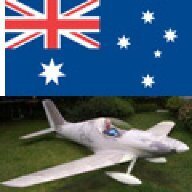
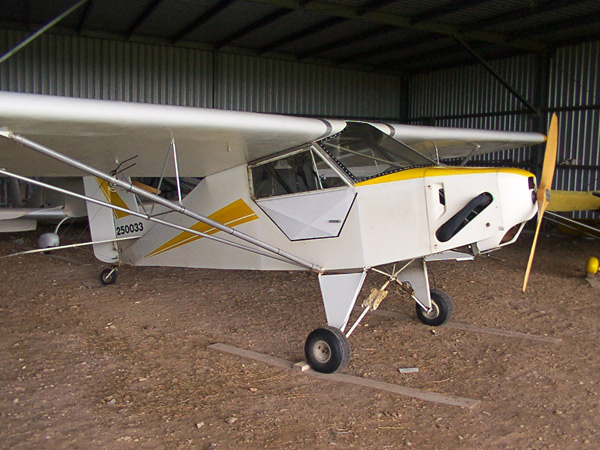
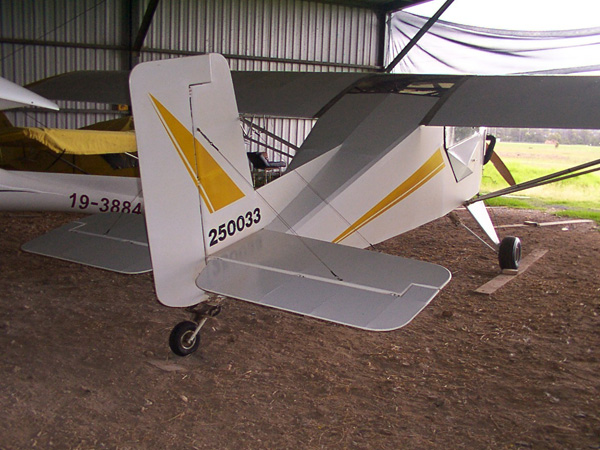
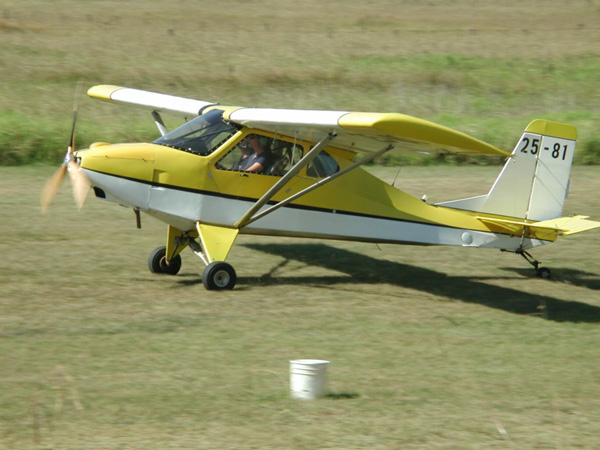
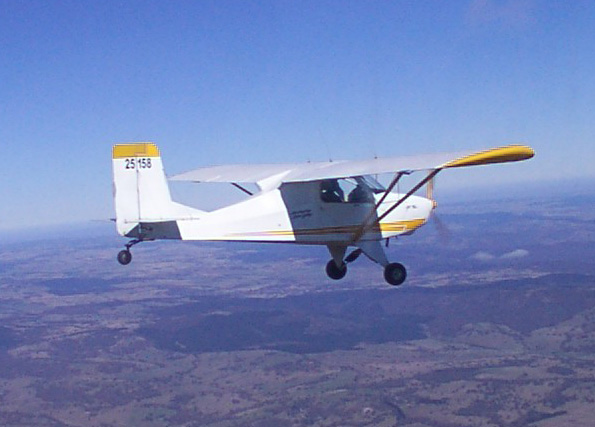
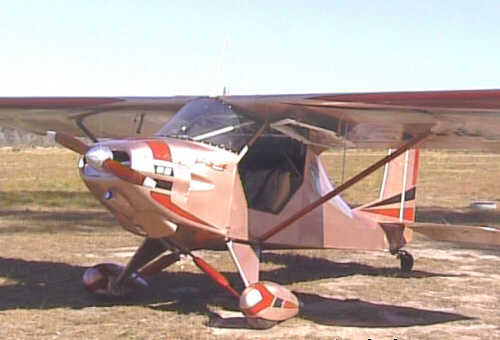
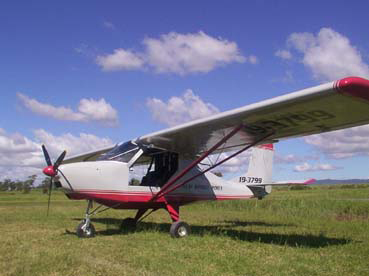
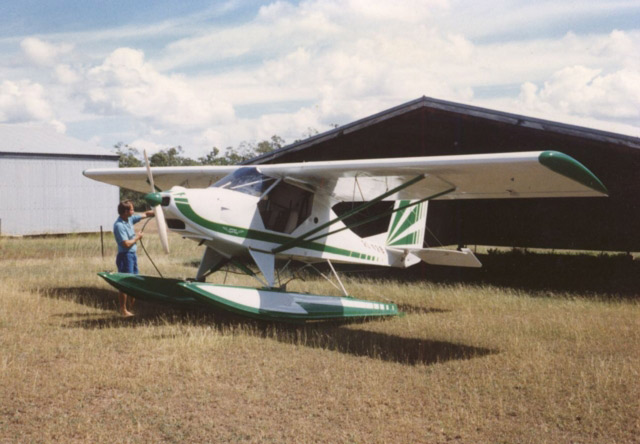
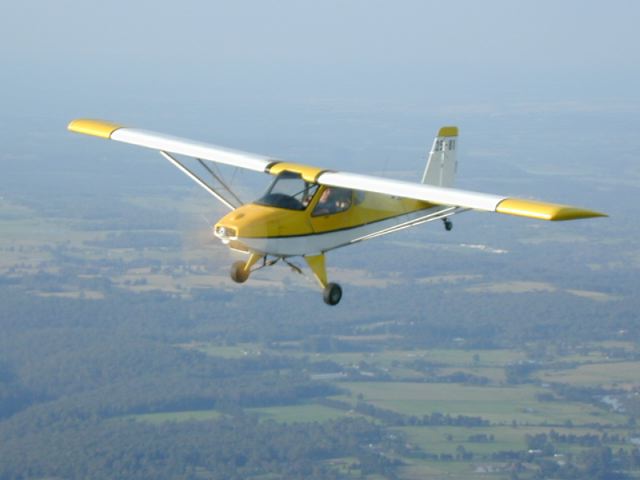
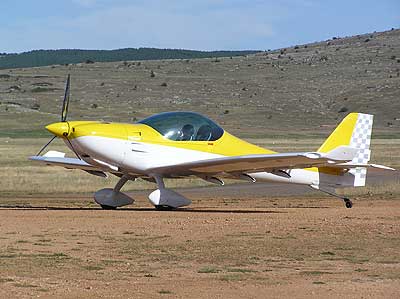
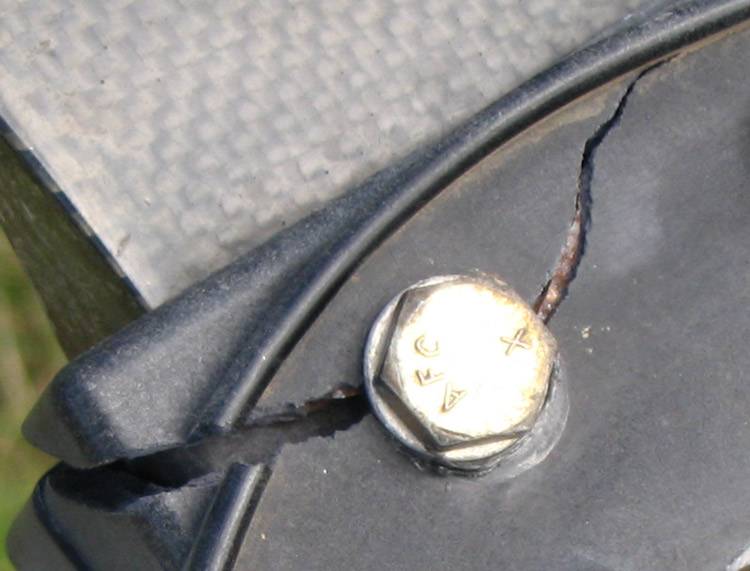
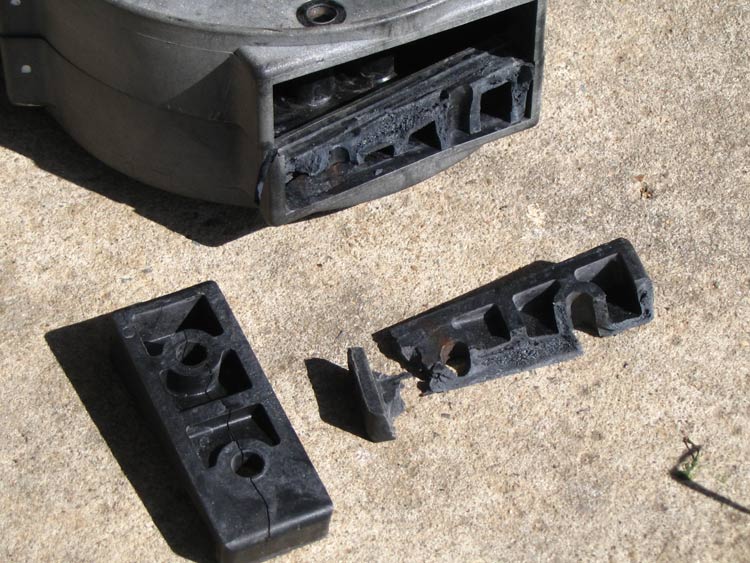
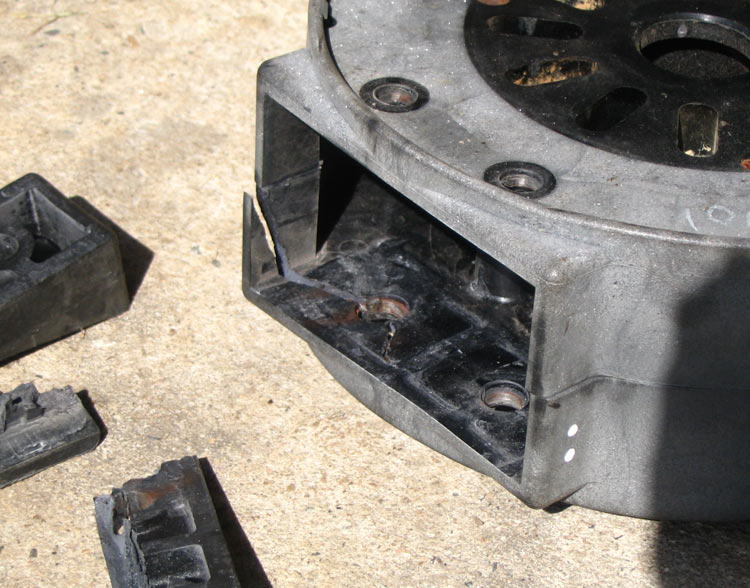




Certification
in Other Rec Aircraft
Posted
I'm not sure sometimes whether to mention something thereby letting everyone (including naysayers) know about it, or just keep quiet and not get noticed.Todays dilemma is props, I like props, I've got a nice collection on my shed wall!My hassle is with certified ultralights that come with a specific prop and you are supposed to stick with it?My
view is that props on aircraft are like tires on cars, they generate
about 20 to 30 percent of the overall range of abilities that can be
displayed by a car or plane.Many argue that the 'manufacturer' knows best, and will supply the optimun prop for the aircraft.Basically this is crap!More than 50 percent of a manufacturers decision as to which prop to fit is driven by cost.All
the prop manufacturers out there are vying to get their item on your
aircraft and I think it should be up to the user of the aircraft to
decide what specific use they have for the aircraft and be able to
choose the prop that suits that need.And if the manufacturer supplies you with a 'lump of wood' because it's cost effective (to him) you should have the option to replace it with your own choice.I started ultralighting with assorted two blade woods, then could afford a three blade wood.It was nice, I could dial up (on the ground) just the pitch I wanted and feel a lot less vibration.Then there was a big panic because an abused version of my three blade wood came apart!By now I could finally afford to go composite and have done a lot of flying behind a very nice French prop.Then with an engine change I needed a bigger prop so bought a local black composite prop which is doing very well.All
this time I have been doing a lot of flying in a 'certified' ultralight
which when fitted with the 'correct' prop has very poor performance.Anyone
out there flying a locally produced, 912 powered machine with a wooden
'stick' can see how much better others are doing when they change to a
more modern prop.How do we go about removing propellors from the certification process?